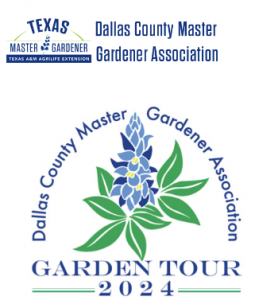Insects and Arthropods
Books (alphabetical by title)
Bee Basics: An Introduction to Our Native Bees, Beatriz Moisset and Stephen Buchmann, A USDA Forest Service and Pollinator Partnership Publication, 2011, 40 pp.
Fireflies, Glow-worms, and Lightning Bugs: Identification and Natural History of the Fireflies of the Eastern and Central United States and Canada, Lynn Frierson Faust, University of Georgia Press, 2017, 356 pp.
For Love of Insects, Thomas Eisner, 2005, The Belknap Press of Harvard University Press, 448 pp.
Guide to Observing Insect Lives, Donald Stokes, Little, Brown and Company, 1983, 371 pp.
Silent Sparks: The Wondrous World of Fireflies, Sara Lewis, Princeton University Press, 2016, 223 pp. index.
Texas Bug Book: The Good, the Bad, & the Ugly, Howard Garrett & C. Malcolm Beck, University of Texas Press, 2005, 202 pp.
The Eat a Bug Cookbook Revised: 40 Ways to Cook Crickets, Grasshoppers, Ants, Water Bugs, Spiders, Centipedes, and Their Kin, David George Gordon, Ten Speed Press, 2013, 136 pp.
The Life Cycle of Butterflies (From Egg to Maturity, a Visual Guide to 23 Common Garden Butterflies), Judy Burris, Storey Publishing, 2006, 160 pp.
The Voice of the Infinite in the Small:Re-visioning the Insect-Human Connection, Joanne E. Lauck, Swann Raven & Company, 1998, 388 pp.
What Good are Bugs?: The Insects in the Web of Life, Gilbert Waldbauer, Harvard University Press, 2003, 366 pp.
Field Guides (alphabetical by title)
A Field Guide to Common Texas Insects, Bastuann M. Drees and John A. Jackman, Gulf Publishing Company, 1998, 359 pp.
A Swift Guide to Butterflies of North America, Jeffrey Glassberg, Princeton University Press. 2017, 420 pp.
Beetles of Eastern North America, Arthur V. Evans, Princeton University Press, 2014, 560 pp.
Butterflies of North Texas: A Guide to Common and Notable Species, Roland Wauer, Quick Reference Publishing, laminated pamphlet.
Caterpillars of Eastern North America: A Guide to Identification and Natural History, David L. Wagner, Princeton University Press, 2005, 512 pp.
Common Insects of Texas and Surrounding States: A Field Guide, John Abbott and Kendra Abbott, University of Texas Press, 2020, 446 pp.
Damselflies of Texas: A field Guide, John C. Abbott, University of Texas Press, 2011, 268 pp.
Dragonflies of Texas: A field Guide, John C. Abbott, University of Texas Press, 2015, 448 pp.
Field Guide to the Flower Flies of Northeastern North America, Jeffery H. Skevington and Michelle M. Locke, Princeton University Press, 512 pp.
Garden Insects of North America: The Ultimate Guide to Backyard Bugs, Second Ed., Whitney Cranshaw an David Shetlar, Princeton University Press, 2018, 704 pp.
Kaufman Field Guide to Butterflies of North America, Jim P. Brock & Kenn Kaufman, Houghton Mifflin Harcourt, 2006. This resource includes a host plant list.
Kaufman Field Guide to Insects of North America: The Easiest Guides for Fast Identification, Eric R. Eaton and Ken Kaufman, Hillstar Editions, L.C. 2007, 390 pp.
Peterson Field Guide to Moths of Southeastern North America, Seabrooke Leckie & David Beadle, Houghton Mifflin Harcourt, 2018, 640 pp.
Spiders of Texas: A Guide to Common and Notable Species, Valerie G. Bugh, Quick Reference Publishing, laminated pamphlet.
Organizations and websites
https://citybugs.tamu.edu/ The Texas A&M Agrilife site provides current information for the public. Whether it’s termites or fire ants, white grubs or aphids…if it’s an insect pest, they’ll try to provide you with the best in science-based, pest management solutions.
https://www.entsoc.org/Entomological Society of America
https://entomology.tamu.edu/ The Department of Entomology at Texas A&M University.
https://www.firefly.org/ Firefly & Lightning Bugs: Facts, pictures, and information.
inaturalist iNaturalist is a social network of naturalists, citizen scientists, and biologists built on the concept of mapping and sharing observations of biodiversity across the globe. iNaturalist may be accessed via its website or from its mobile applications.
http://www.knowyourinsects.org
A key to identify insect orders in Michigan and beyond.
http://www.lostladybug.org/ Over the past twenty years native ladybugs that were once very common have become extremely rare. This is a citizen science project to uncover what is happening with lady bugs.
https://www.monarchwatch.org/ Monarch Watch Education, Conservation, Research.
https://www.nfwf.org/programs/monarch-butterfly-and-pollinators-conservation-fund The National Fish and Wildlife Foundation Conservation Fund supports work that advances the conservation of the monarch butterfly and other at-risk native insect pollinators.
https://texasbeekeepers.org/ Texas Beekeepers Association was formed in 1880 to provide an environment where established beekeepers could meet and share methods and experiences, while learning new techniques and discovering new research. It’s focus, then and now, is about the honey bee, it’s survival and management.
https://texasinsects.tamu.edu/ Extensive, useful information about the most common insects in Texas.
https://www.tvbees.org/ Trinity Valley Beekeepers Association is a charitable 501-(c)-3 non-profit corporation bringing together old, new and aspiring beekeepers in the Dallas area.
https://xerces.org/ The Xerces Society for Invertebrate Conservation is an international nonprofit organization that protects the natural world through the conservation of invertebrates and their habitats. As a science-based organization, we both conduct our own research and rely upon the most up-to-date information to guide our conservation work. Key program areas are: pollinator conservation, endangered species conservation, and reducing pesticide use and impacts.
https://entomology.unl.edu/k-12-teacher-resources
Social Media
https://www.facebook.com/xercessociety The Xerces society page.
https://www.facebook.com/groups/1440504542888894 What Kind of bug is this? A group of insect enthusiasts.
https://www.facebook.com/north.texas.beekeepers
https://www.facebook.com/arachnids.spiders
Apps
iNaturalist: iNaturalist is an online social network of people sharing biodiversity information to help each other learn about nature. It’s also a crowdsourced species identification system and an organism occurrence recording tool. You can use it to record your own observations, get help with identifications, collaborate with others to collect this kind of information for a common purpose, or access the observational data collected by iNaturalist users. It is a joint initiative of the California Academy of Sciences and the National Geographic Society.
See this NPR news story for more on iNaturalist: here
To learn how to use inNaturalist, please visit their great video tutorials. https://www.inaturalist.org/pages/video+tutorials
There are directions for using your smartphone, your pc, taking photos, everything you need to know!
Seek: The Seek app (free on iOS), developed by iNaturalist, combines the gamification and collection aspects of Pokémon Go with exploration of the natural world. It works like this: The app uses your general location to populate a list of plants and animals you’re likely to encounter in the area, and each plant and animal listing in the app also includes photos and useful facts. You can then snap photos of those species as you come across them, adding them to your virtual collection in the app.
Insect lists for North Texas from iNaturalist
Beetles: https://www.inaturalist.org/observations?place_id=1281&taxon_id=47208&view=species
Dragonflies/Damselflies: https://www.inaturalist.org/observations?place_id=1281&taxon_id=47792&view=species
True bugs (Hemiptera): https://www.inaturalist.org/observations?place_id=1281&taxon_id=47744&view=species
Videos
Presentations
Entomology 101: Why Study Insects? by Molly E. Keck, Integrated Pest Management Program Specialist, Board Certified Entomologist, Texas A&M AgriLife Extension Service, Bexar County. Click here.
Management Recommendations for Native Insect Pollinators in Texas:
https://tpwd.texas.gov/publications/pwdpubs/media/pwd_bk_w7000_1813.pdf
Leave the Leaves: https://xerces.org/blog/leave-the-leaves
Pod Casts
http://arthro-pod.blogspot.com Arthro-Pod. The podcast that teaches you about the weird and wonderful world of insects.
https://extension.oregonstate.edu/podcast/pollination-podcast PolliNation Podcast. A podcast from Oregon State University Extension Service that tells the stories of researchers, land managers and concerned citizens who are making bold strides to improve the health of pollinators.
Insects and Arthropods Training
https://www.coursera.org/learn/bugs-101 Bugs 101 through the University of Alberta. In Bugs 101: Insect-Human Interactions, you will be plunged into the diverse (and sometimes alien) world of arthropods to learn how they work, what they do, and how insects and humans interact every day.
https://u.osu.edu/beelab/courses/ Webinars, Workshops and Short Courses from the Bee Lab at Ohio State University focusing on honey bees, wild bees, and other pollinators.
Especially for children (alphabetical by title)
Bugs: A Stunning Pop-up Look at Insects, Spiders, and Other Creepy-Crawlies, George McGavin, Candlewick Press, 2013.
Bug Bingo, Christine Berry, Laurence King Publishing, 2014.
Bugs! Bugs! Bugs!, Bob Barner, Chronicle Books, 2017, 32 pp.
Bugs in the Backyard, Camilla De La Beyoyere, Firefly Books, 2016, 80 pp.
Discover the World of Bugs: Lift the Flap, Christina Peraboni and Christopher Banfi, White Star Kids, 2018, 20 pages.
Eyewitness Insect: Discover the Busy World of Insects – Their Structure, History and Fascinating Variety, Laurence Mound, DK Publishing, 2004, 72 pp.
How Strong Is an Ant?: And Other Questions about Bugs and Insects, Mary Kay Carson, Sterling Children’s Books, 2014.
Do you have a resource that we should add to this page? Please email website@ntmn.org with the information. Thank you!
 North Texas Master Naturalist
North Texas Master Naturalist


